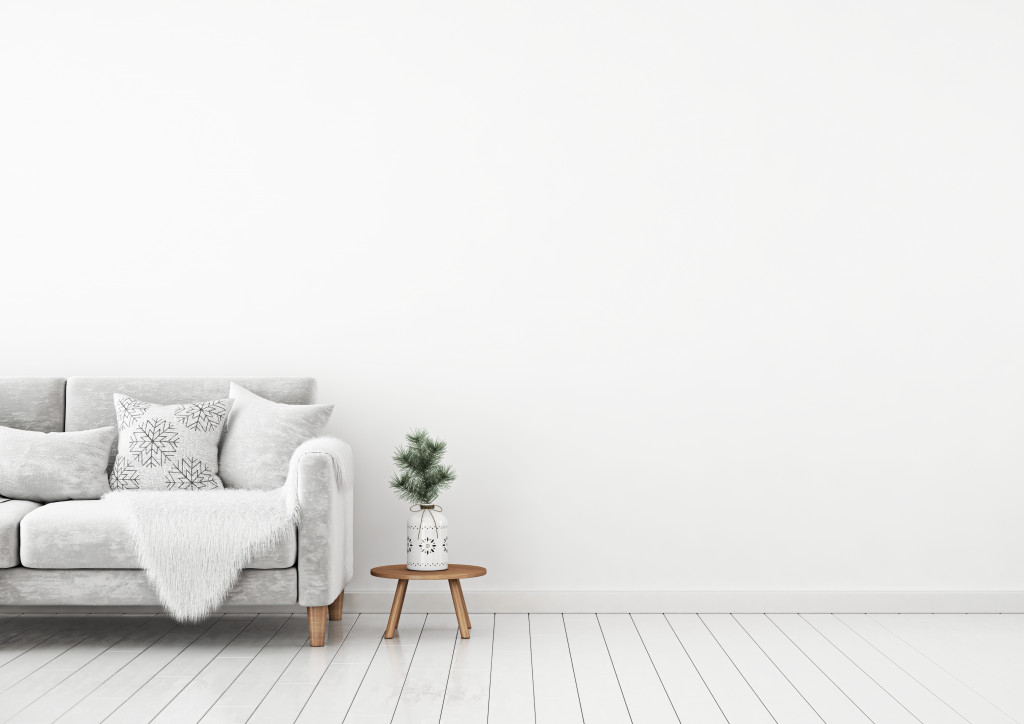Cream-colored walls, textured throw pillows, and incredible respect for symmetry. In this day and age, a minimalist home is every homeowner’s wildest fantasy.
Gone are the days when excessive use of colors and patterns was still in fashion. The chic and polished look is now the trend in the world of interior design.
Many are drawn to the allure of no-frills spaces because of the sophisticated simplicity and soothing aesthetic it brings to the table. And with a growing understanding of the concept “less is more,” people are more eager to get rid of non-essentials and just stick to the basics. So, what are the fundamentals of taking the minimalist route?
Stick to Subdued Shades
When going for a basic look for your home, work around a limited color palette, preferably a maximum of three hues. You can opt for pastel shades or solid tones, but neutral colors are an ideal color scheme for a minimalist home. Black, beige, gray, and ivory white are classic colors that go well with anything. This color range also screams elegance and sophistication. But if you want a pop of color in your living quarters, you can infuse hints of blue, green, and brown to your subdued palette.
So, how can you put this knowledge about palettes into practice to create an atmosphere of simplicity inside your home? Assign a light shade of color for your walls, preferably white with yellow undertones to give it a rich, creamy look. Meanwhile, select a darker tone for your furniture pieces to make them stand out from the background. Your carpet and rugs, on the other hand, should be slightly complementary to your flooring.
Choose Pieces with Character
The secret to a stunning minimalist home is texture. Incorporating pieces with various tactile properties gives character to your entire interior.
Texture makes any space look more interesting as it plays with both visual and tactile senses. Choosing varied fabrics for upholstery and decorative elements is also said to add visual depth to your space.
So, you might want to throw in different textures, fabrics, and materials—linen couch, metal stool, wooden coffee table, velvet throw pillows, looped carpet, silk blinds, and wooden flooring. While it’s important to choose ornamental pieces with a variety of textures, don’t forget to align it with the overall theme of your space, of course.
Aside from that, the imperfections on your walls, flooring, kitchen counter, and dining table also help in enhancing the look of your place. The cracks, the rough edges, and the peeling paint add charm to your minimalist retreat.
Keep it Bare
Plain walls are part of the minimalist approach of redesigning. If you want to achieve a less cluttered look, strip all unnecessary trimmings off your wall. When you take down these excessive trinkets, you’re already one step closer to a neat-looking aesthetic.
Though unadorned walls are more favorable for full-blown minimalists, there’s no definite rule that forbids you from putting a few trimmings here and there. You can hang at least two or three ornamental elements on your walls just to serve as accent pieces.
It is also advised to limit the decors on coffee tables, nightstands, and kitchen counters. Try to eliminate unnecessary knick-knacks from plain view and just leave pieces that are eye-candy and useful.
Design with Less
A minimalist home deeply values quality over quantity. Instead of furnishing your porch with tons of furniture and decors to cover cracks and sagging on the floor, get a porch repair service. And when you want to add furniture, prioritize pieces that bring comfort and convenience, not the other way around.
Incorporate furnishings that are practical and space-saving. A good sofa, a sturdy coffee table, a useful desk chair, a trusty bookshelf, a dining table are some important pieces of furniture you need in your home. Refrain from adding too many elements that can only contribute to clutter.
Keep It Balanced
Observe the principle of space and balance when refurbishing your space. This is a total game-changer in achieving a simple yet stylish interior.
Your furnishings and decorative pieces must be symmetrically balanced. Applying this principle will give your home a neat and relaxed ambiance.
You can achieve symmetry by establishing a focal point in your interior or determining the most important element in your home that you can just work around on. You can also create symmetry by balancing out the visual weight in the area until all elements are equally distributed. Or, you can ascertain the balance of the entire interior by using ratio measurements. Through this basic design principle, you can already establish harmony among all the elements in your minimalist home.
To live in a minimalist retreat is everyone’s greatest fantasy, not only because of the aesthetic relief it brings but also because of the climate of peace that comes with it. So, if you want a simple life, then it’s time you go basic.

